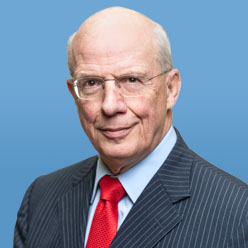“Go down gamblin’, say it when you’re running low. Go down gamblin’, you may never have to go.” So sang the jazz rock group, Blood Sweat and Tears, on their hit song of the same name back in 1971. Although Vladimir Putin probably never heard those particular lyrics, they provide a good description of the increasingly-frantic strategy behind the Russian President’s efforts to cling to power. Simply put, Putin is making risky moves in Ukraine because they are his best option to buy the time to stay in power.
Take his recent plan for “partial mobilization” of the Russian citizenry, for instance. The idea was borne of necessity. In the wake of the embarrassing rout of Russian troops in Ukraine’s Kharkiv region in early September, there was a real danger that his demoralized forces might collapse in other places as well. Putin decided to boost their spirits, and those of China and other friendly countries, by proclaiming that he will expand Russia’s fighting force by over 300,000 men.
Of course, Putin knew that the gains of any mobilization will be meager. While his government might be able to conscript en masse, it would be months, at best, before sizeable numbers of troops could join the fight with even a modicum of training. Reports that conscripts are already being deployed into Ukraine indicate that the Kremlin sees these new forces as little more than cannon fodder. However, these conscripts serve another purpose – to provide hope to those on the front lines that time can still be bought.
Moreover, Putin’s plan is politically risky, in domestic terms. Ahead of the announcement, Kremlin officials had surmised the idea would be unpopular with the Russian public. But the depths of rejection now being seen in Russian society – from full flights to foreign locales to a massive traffic backup at Russia’s common border with Finland – have surpassed their expectations. Moreover, this situation is poised to get worse; as body bags from the Ukraine front continue to return home, domestic discontent will only rise in intensity.
Putin is also sacrificing troops to buy time. Knowing they were trapped, and without access to resupply, the commanders of Russia’s more than 20,000 soldiers on the West bank of the Dnieper river asked Putin for permission to withdraw in mid-September. The Russian president refused. As a result, these soldiers are now likely to die, desert or surrender – either quickly or after some resistance. But for Putin, it was a worthwhile sacrifice to make in order to convey the image that his army, though clearly not thriving, is nonetheless surviving in Ukraine.
Why such gambles now? Putin’s calculation may be that his regime cannot survive another major battlefield loss. He may also be wagering that if he can get through the coming weeks that precede Ukraine’s famous “mud” season—a period where offensive maneuvers are not possible – perhaps the West’s attitudes will begin to change as Western and Central Europe face what he hopes will be a very cold winter without sufficient supplies of natural gas.
Short of this playing out as he envisions, though, Putin may indeed have to look at the nuclear option. That’s a course of action that may be rejected by his military nuclear chain of command, and could itself be something that might lead to his removal from power. Even so, Putin has increased the possibility of nuclear use by annexing the Ukrainian oblasts of Kherson, Luhansk, Zaporizhzhia, and Donetsk – a move that is sure to further isolate Russia on the world stage. Putin’s gamble here is that any resulting erosion of support at home or abroad would be worth it if the West treads more cautiously, and rolls back its assistance to Ukraine, as a result.
Yet if a critical mass of Russia’s elite comes to believe that Putin’s multiple mistakes will only be compounded if he remains in power, they can be counted on to try and remove him, by force if necessary. History shows us that, over the past seven decades, nearly two thirds of dictators fell as a result of internal coup or assassination. That may become the fate of Russia’s strongman president as well.
All of this makes Putin’s gamble a high-stakes one indeed.
In 1982, Herman Pirchner, Jr. became the founding President of the American Foreign Policy Council (AFPC), a non-profit public policy organization headquartered in Washington, DC. Under his leadership, AFPC has hosted Washington events for hundreds of foreign officials ranging from the Prime Minister of Malta to the Prime Minister of Russia; conducted hundreds of briefings for Members of Congress and their staffs and, organized dozens of fact-finding missions abroad for current and former senior American officials. Former Secretary of Homeland Security Tom Ridge, Former Secretary of Defense Don Rumsfeld, Former Speaker of the House of Representatives Newt Gingrich, former Director of Central Intelligence R. James Woolsey, as well as the former Chairman of the Joint Chiefs of Staff General Dick Myers are among those who have participated in this program. He is the author of Post-Putin: Succession, Stability, and Russia’s Future (Rowman & Littlefield, 2019).
